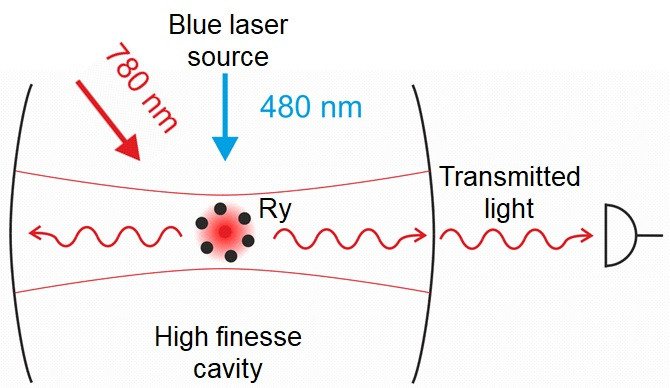Elmer Suarez, EKUT, (WP2)
EKUT will set up an experiment with cold Rydberg Rb87 atoms in a high-finesse optical cavity. Rydberg atoms will be generated via a 2-photon process: a ladder-type excitation scheme with the D2 transition as the lower step followed by a coherent excitation to a Rydberg level with a blue (480 nm) light source. Due to the Rydberg blockade, strong long-range dipolar interactions are generated within the cloud. This effect will compete with the usual cavity backaction (as known from e.g. CARL) and dramatically change the collective scattering process. We will study this scattering process by monitoring the cavity transmission and the resultant atomic momentum distribution.
During the first stage of the project, the blue light source and a MOT had to be made. We generate blue light by frequency doubling: an LBO crystal inside a bow-tie cavity is pumped by the enhanced light of the latter. Later, two PDH locking schemes are used to control the power and frequency of the generated blue light: for the power, via a PZT on one of the cavity mirrors and, for the frequency, by doing EIT FM spectroscopy on a heated Rb cell. On a later stage, we will control the high-finesse cavity’s length so as to detune its mode’s frequency relative to the D2 transition. All of this will allow us to study, for example, CQED in the strong coupling regime, Dicke-Ising physics and four-wave mixing in optical cavities. The latter, in particular, could be used as a source of single photons by exploiting the blockade effect between Rydberg atoms.
Visit Elmer’s outreach page
Publications and Posters
Elmer Suarez, David Auwärter, Tiago J. Arruda, Romain Bachelard, Philippe W. Courteille, Claus Zimmermann, and Sebastian Slama. Photon-antibunching in the fluorescence of statistical ensembles of emitters at an optical nanofiber-tip. New J. Phys. 21 035009 (2019).
